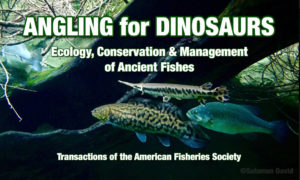

Native Lampreys: Research and Conservation of Ancient Fishes
New special section in the North American Journal of Fisheries Management: A symposium at the 2023 American Fisheries Society meeting highlighted collaborations among biologists, policymakers, and Native American tribes addressing conservation for native lampreys. Native lampreys provide ecosystem services that benefit a range of aquatic organisms and are essential to Native American tribes for nutritional, medicinal, and ceremonial purposes. The papers in this collection present key findings, related research, and an example of grassroots effort to protect and restore Pacific Lamprey.











